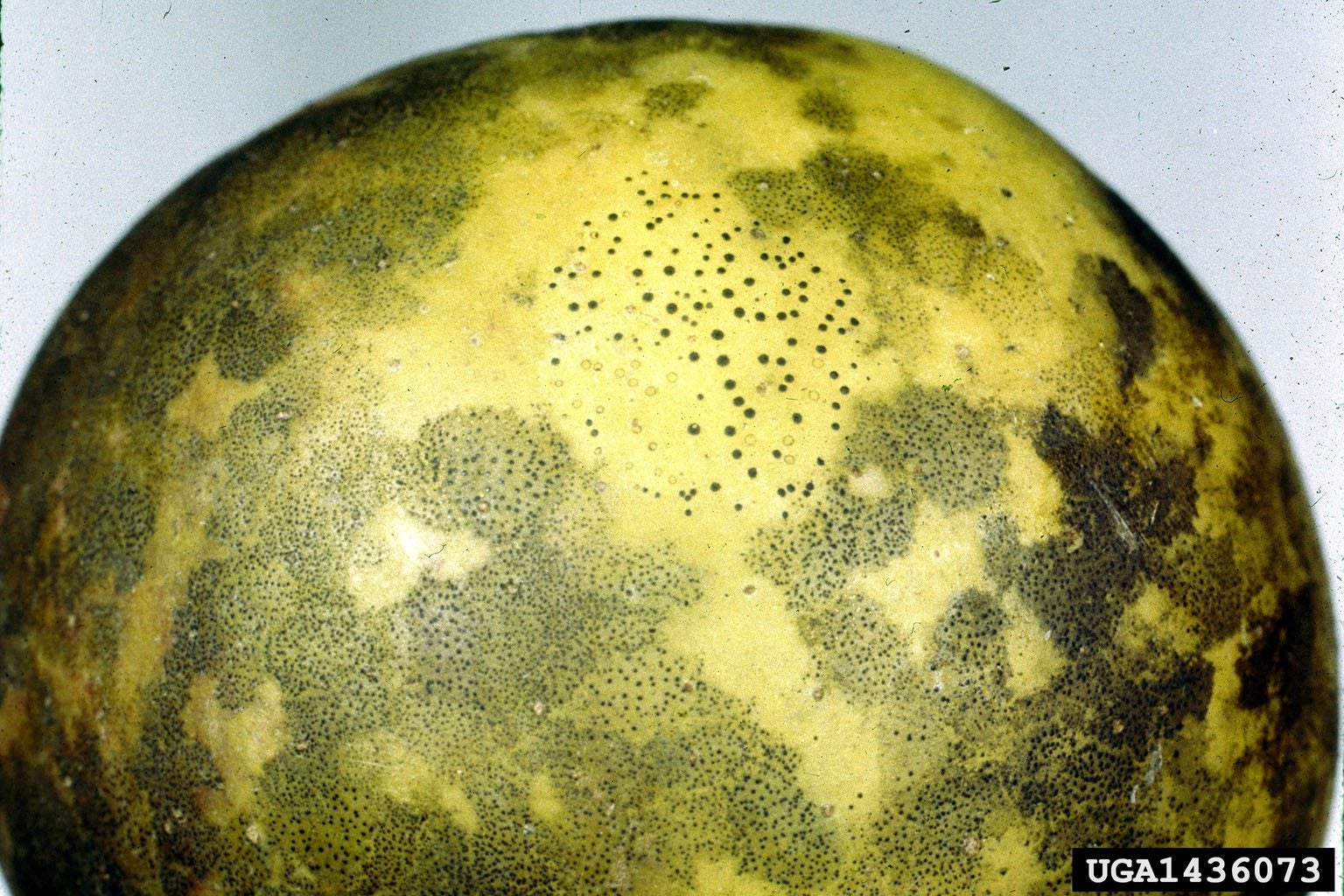Flyspeck Apple Disease - Information About Flyspeck On Apples


Apple trees make excellent additions to the landscape or home orchard; they require little care and most varieties fruit predictably from year to year. That's why it's doubly frustrating when maturing apples develop fungal problems like flyspeck and sooty blotch. Although these diseases don't necessarily make apples inedible, they can make apples unmarketable. Flyspeck on apples is a common problem, but it's simple to manage with some cultural modifications.
What is Flyspeck?
Flyspeck is a disease of maturing apples, caused by the fungus Zygophiala jamaicensis (also known as Schizothyrium pomi). Spores germinate when temperatures are between 60 and 83 degrees Fahrenheit (15-28 C.) for about 15 days, and relative humidity exceeds 95 percent. Flyspeck apple disease appears on fruits as a series of tiny black dots, typically in groups of 50 or more. The fungus responsible for flyspeck overwinters on apple twigs but may be blown in from wild sources or other fruit trees for a period lasting up to two months around bloom time. Many gardeners implement spray schedules to control this and other fungal diseases, but if flyspeck is your primary apple problem, you can easily manage it without potentially dangerous chemicals.
Flyspeck Removal
Once flyspeck is active in your apple tree, it's too late to treat it, but don't stress -- the apples that are affected are perfectly edible if you peel them first. Long-term management of flyspeck should focus on reducing the humidity inside the apple tree's canopy and increasing air circulation. Prune your apple tree yearly to open up the canopy and prevent wetness from building up in this tightly packed center. Remove all but a few main branches and train the tree into a structure with an open center; depending on the age of your tree, you may want to prune it in stages to prevent stress. When small apples begin to appear, remove at least half of these small fruits. Not only will this allow your other fruit to grow considerably larger, but it will also prevent the fruits from touching and creating small areas of high humidity. Keep the grass mowed and any brambles or wild, woody plants cut back to remove places where flyspeck apple disease fungus can hide. Although you can't control plants belonging to your neighbors, by removing these close-in repositories of fungal spores, you can minimize the risk of flyspeck on apples in your orchard.
Gardening tips, videos, info and more delivered right to your inbox!
Sign up for the Gardening Know How newsletter today and receive a free copy of our e-book "How to Grow Delicious Tomatoes".

Kristi Waterworth was a regular contributor to Gardening Know How for many years, answering countless queries on plant pests and diseases.
-
 Get Ready For A Summer Of Hummers! Grow These Full Sun Hummingbird Plants and Flowers
Get Ready For A Summer Of Hummers! Grow These Full Sun Hummingbird Plants and FlowersIf you’re lucky enough to enjoy a sunny backyard, make sure you are maxing out on your pollinator opportunities and grow these full sun hummingbird plants and flowers
By Tonya Barnett
-
 12 Lush Alternatives To A Lawn For Sustainable Spaces
12 Lush Alternatives To A Lawn For Sustainable SpacesAlternatives to a lawn are beautiful and also beneficial to your local ecosystem and its pollinators. Explore our top picks for plants to replace grass.
By Tonya Barnett